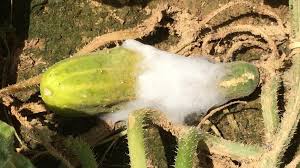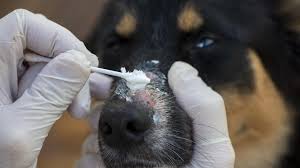Measures of Controlling Plant Diseases
Plant disease control is concerned with preventing or at least restricting the development of plant disease epidemics. Most control measures for plant disease are designed to prevent rather than cure.
They aim to operate on the pathogen before it has established a parasitic relationship with the host.
Principles of Plant Disease Control
Two of these methods are mainly concerned with the pathogen:
If the pathogen is not already present in an area then methods are devised to exclude it (exclusion);
If it does get in then attempts are made to eradicate it (eradication).
The other two concern the host:
By applying a chemical to the plant surface or by modifying the condition under which the plant is growing it is often possible to protect it from attack (protection).
By breeding, it is sometimes possible to obtain varieties of the particular plant which resist attack (breeding for disease resistance).
Control measures can be classified into various categories. These include cultural practices, the destruction of insects by chemicals and the development of diseases resistant varieties.
1. Cultural Practices
1a. Crop rotation
Important pest and diseases such as cyst nematode and club root, attack specific crops. By the simple method of planting a given crop in a different plot each season, such pests or diseases are excluded from their preferred host for several seasons.
1b. Destruction of infected material
An important cultural practiced is the eradication of suspected sources of plant diseases.
This includes the uprooting of weed hosts and alternate hosts and the removal, burning or burying of diseased plants, particularly those infected by bacterial or virus diseases.
Diseased tree crops should be treated by pruning away diseased portions of individual plants, after which all cut surfaces, should be treated with white lead paint.
1c. Ploughing
This brings about physical improvement of the soil structure as a preparation for growing of crops. The improved drainage and tilt may reduce damping-off diseases, expose soil pest to the birds.
1d. Soil fertility
While the correct and balance of major nutrients in the soil are recognised as vitally important for maximum yield and quality, excessive nitrogen levels may encourage the increase of insects such as peach potato aphid, fungi e.g. grey mould.
Adequate levels of potassium help control fungal diseases e.g. Fusarium wilt on carnation, and tomato mosaic virus.
Club root disease of brassicas is less damaging in soil pH greater than six, and lime may be incorporated before planting these crops to achieve this aim.
Dressing with suitable fertiliser may stimulate growth of the host plant so that it will recover from damage caused by disease.
1e. General farm sanitation
Reasonable sanitary precaution on the farm may help to prevent the introduction of diseases from other fields. Some virus diseases are spread by contact.
Clothing, machinery, and equipment that have been in use on such infested fields should be disinfected before being used on other fields.
1f. Seed treatment
To avoid seed borne diseases being carried over from one season to the next, seed to be planted is often treated with a fungicide, e.g. Arasan.
1g. Avoidance
Sometimes, a pest or disease is most prevalent at a certain time of the year. The planting may be so timed that the crop grows during the time when the diseases or pest incidence is least.
Example the deliberate planting of early potato cultivars enables harvesting before the maturation of potato cyst nematode, so that damage to crop and the release of the nematode eggs is avoided.
2. Chemical Method (destruction of insects’ vectors)
2a. Use Chemicals (insecticides)
The control of insect vectors which carry disease has been effective in reducing the spread of some diseases such as swollen shoot disease of cocoa and mosaic disease of cassava. Aphids and leaf-hoppers which transmit these diseases can be controlled by the use of insecticides.
Fungal diseases are controlled by chemicals referred to as fungicides. These chemicals may be sprayed or dusted on to the seeds, young leaves, shoots or flower buds before the arrival of the fungal spores.
Seed treatments are normally effective when the disease is transmitted via seed. Diseases such as smuts or rust may be controlled by soaking the seeds in fungicides before sowing. Certain chemicals (soil fumigants) are effective in controlling nematodes, soil-borne insects and soil borne diseases.
Repellents; Repellents are chemicals which do not actually kill the pests, but they repel them from coming near the plants.
Read Also : Integrated Pest Management and Symptoms of Plant Diseases
3. Biological Control
A more recent approach to the control of plant pests and diseases is biological control, which emphasizes the control of diseases and pest through manipulation of natural and ecological factors.

Planting disease-resistant varieties; the use of disease resistant varieties of some crops has proved to be very successful in the control of plant diseases.
Biological control also refers to control of diseases by the use of other organisms to reduce inoculum density or the disease producing activities of the causative agents of diseases.
4. Physical Method
Treating seeds of cereals in hot water to kill the loose smut pathogen (Ustilago nuda), and floating of cereal seeds to separate healthy grains from those infected by ergot (Claviceps purpurea) are two examples of physical method of disease control.
Grain smut of sorghum may be controlled by soaking seed in water for 4 hours to initiate germination of the fungal spores.
The seed is then spread out to dry, first in the shade and later in the sun, causing the germination of spores to be killed without harming the seed.
Physical methods of this kind may be widely applicable in Africa for certain diseases, and represent one of the more feasible control options available to smallholders.
In summary, this article concentrated on pest and diseases affecting crops. It explained the nature and characteristics of pest, effects of pests and the control and preventive measures.
Diseases, symptoms of plant diseases, causative organisms, control and preventive measures were also treated.
It stressed that the effective control of pests and diseases should be based on a sound knowledge and understanding of pests and diseases of a particular crop in a given locality.
Read Also : Commercial Wastes Complete Management Guide









